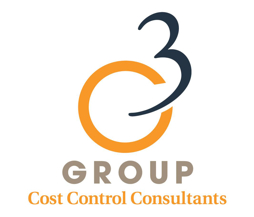December 2021 Benefits Breakdown
What Happens if an Employee Misses Open Enrollment?
For an employee, missing open enrollment can mean losing coverage or being unable to change benefits elections, which can have a significant financial impact on the employee. For employers, when employees miss this deadline, it can result in additional administrative burdens and unhappy or unproductive employees.
Download the Entire PDF Below:
Employee Tips for Open Enrollment - Video
This Benefits 101 video explains to employees how to read a medical bill.
Benefits Buzz Newsletter - October 2021
Each year, Medicare Part D requires group health plan sponsors to disclose whether the health plan’s prescription drug coverage is creditable to individuals eligible for Medicare Part D and to the Centers for Medicare and Medicaid Services (CMS).
Plan sponsors must provide the annual disclosure notice to Medicare-eligible individuals before Oct. 15, 2021—the start date of the annual enrollment period for Medicare Part D. CMS has provided model disclosure notices for employers to use.
Medicare beneficiaries who do not have creditable prescription drug coverage and do not enroll in Medicare Part D when first eligible will likely pay higher premiums if they enroll at a later date. Although there are no specific penalties associated with the notice requirement, failing to provide the notice may be detrimental to employees.
Download the Entire PDF Below:
COVID-19 Vaccine Surcharges, Mandates and Incentives: What Employers Should Know
COVID-19 vaccinations are a highly contentious topic in America. Many U.S. adults still haven’t gotten the shot despite the Food and Drug Administration’s recent (FDA) full approval of the Pfizer-BioNTech vaccine.
This reluctance is seen as a problem by health experts, who contest that vaccination is the most effective way to control the widespread coronavirus Delta variant. It’s also a problem for employers wishing to maintain uninterrupted operations and keep employees healthy.
So, if an employer wants a vaccinated workforce but is dealing with vaccine skepticism, what are their options? This article explores this complicated situation and discusses the multitude of choices facing employers.
Read more by downloading our HR Insights Bulletin below:
Affordability Percentages Will Decrease for 2022
Decrease for 2022
On Aug. 30, 2021, the IRS issued Revenue Procedure 2021-36 to index the contribution percentages in 2022 for determining affordability of an employer’s plan under the Affordable Care Act (ACA).
For plan years beginning in 2022, employer-sponsored coverage will be considered affordable if the employee’s required contribution for self-only coverage does not exceed:
- 9.61% of the employee’s household income for the year for purposes of both the pay or play rules and premium tax credit eligibility; and
- 8.09% of the employee’s household income for the year for purposes of an individual mandate exemption (adjusted under separate guidance). Although this penalty was reduced to zero in 2019, some individuals may need to claim an exemption for other purposes.
Read more by downloading our ACA Compliance Overview below:
Open Enrollment 2022 - Benefit Notices
Employers that sponsor group health plans should provide certain benefit notices in connection with their plans’ open enrollment periods. This Compliance Overview includes a chart that summarizes the benefit notices that employers should provide in connection with their 2022 open enrollment periods.
Other notices, such as the Women’s Health and Cancer Rights Act (WHCRA) notice, must be distributed annually. Although these annual notices may be provided at different times throughout the year, employers often choose to include them in their open enrollment materials for administrative convenience.
Read more by downloading our Compliance Overview below:
Industry Veteran Mitchell Hamilton Joins The C3 Group
Meet Mitchell Hamilton. Formerly a Site Director with proven experience delivering costs, recruiting top talent, and developing leaders at a Fortune 50 company, Mitch is an expert in maximizing efficiency, streamlining work, and delivering results for over 35 years. In addition, as site director, Mitch was a perennial award winner that also included multiple years in the top 3 of Site, Warehouse, Manufacturing awards of excellence, which includes winning the highest site award for the company 2 out of his last 4 years.
Offerings
Improvement in efficiency in the areas of people, efficiencies, time and money, that delivers increased profit and improved employee morale for the company.
Approach
Understanding strengths, opportunities, business values and objectives, through observations, interviews, and process reviews. Mitch utilizes his 35+ years of experience to work with the client to develop actions and strategies that improve on the opportunities while building on the strengths.
Qualifications
35+ years of experience of delivering proven exceptional results through the development of leaders, processes, efficiency tracking, and teams with a Fortune 50 company. Delivered P&L results over a period of 9 years, not only off setting inflation in wages, raw materials, and overhead, but also reduced the cost of manufacturing by over 5%. He delivered these results while maintaining less than 2% full time turnover, average IFR < 2 frequency and LTIF < .8 frequency, versus 3.4 and 2.9 respectively.
What that looks like for clients?
We take an active approach that includes on site walkthrough of operations with a knowledgeable leader in the organization and 1-1, round table meetings with key personnel understanding the actual and perceived pain points. We then take the information gathered and notes from observations to put together a proposal that meets the scope and desired outcome of the client.
What is not directly included?
- Margin Maximization: Product profitability
- Strategic Material Sourcing: procurement
- Change Management: managing change in the implementation of actions
- Bottleneck identification: pinch points in manufacturing and their value
Contact to Learn More
Contact Mitchell today to set up a free consultation to discuss your business's efficiency gaps with one of the industry top experts with over 35 years of experience!
Voluntary Benefits Benchmarking Overview
Introduction
In early 2021, employers across the country were surveyed about various employee benefits and human resources topics, and roughly 150 employers responded. The information collected demonstrates how employers across the country are utilizing their voluntary benefits. Most importantly, it shows how some are using voluntary benefits to combat the lingering effects of the COVID-19 pandemic. Voluntary benefits are those that employees can pick and choose from, offered in addition to core benefits (e.g., health insurance).
Typical voluntary benefits include dental coverage, vision insurance, financial counseling, critical illness insurance and others. Many voluntary offerings are 100% paid for by employees, but some employers may cover a portion of the premiums. As such, they can be an excellent way to provide meaningful perks to employees without raising costs. Amid the COVID-19 pandemic, these benefits have been particularly helpful. For many, COVID-19 has increased financial insecurity and negatively affected mental health. Voluntary benefits can help counteract these issues by arming employees with the tools they need to improve. And the survey data suggests exactly how some employers are leveraging their voluntary benefits.
Continue reading for key takeaways from the survey findings.
Download entire PDF below:
Benefits 101: How to Read a Medical Bill - Video
This Benefits 101 video explains to employees how to read a medical bill.
Benefits 101: Questions to Ask Your Doctor - Video
This Benefits 101 video explains to employees the importance of speaking with a primary care physician. It also includes suggested questions to ask.










